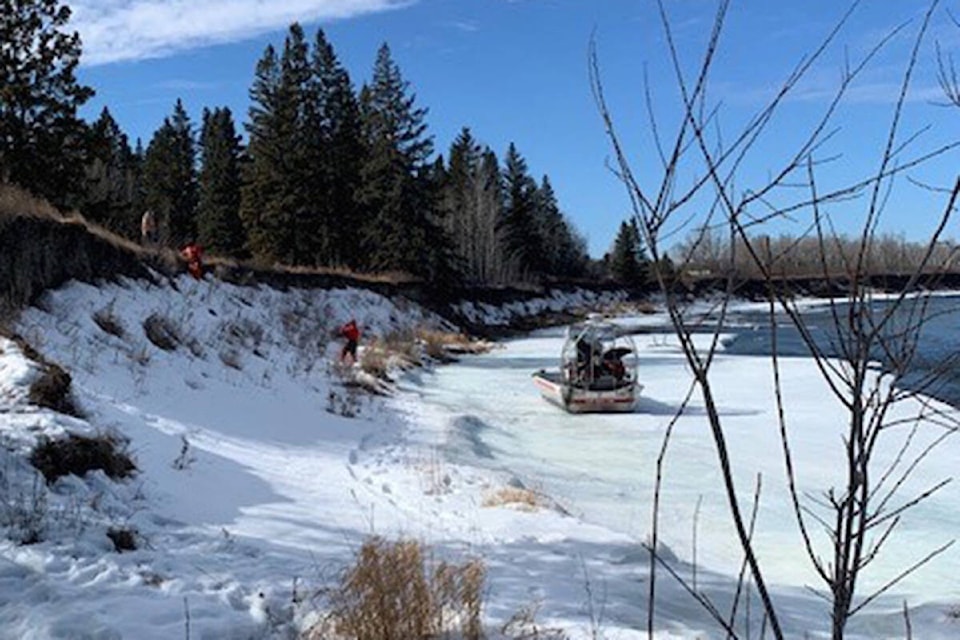Water began flowing on the Red Deer River on Sunday — one of the earliest ice-free dates in more than a century of record-keeping.
Open channels of flowing water on the river were spotted on March 27 by analysts at a hydrometric station based in Red Deer. Alberta Environment and Parks stated this station is operated by the Water Survey of Canada, which has data available from 1912 to 2020 (with three years missing).
According to the survey’s criteria, ‘ice-free’ is determined when water levels at the hydrometric station are no longer impacted by ice, although ice can still be visible on the banks or at other locations along the Red Deer River.
Results from 109 years of record-keeping show only 18 years when the station was ice-free before April 1.
Six years ago, in 2016, was the last time the Red Deer River had water flowing before the start of April. 2016 also holds the date of the earliest recorded ice break, on March 17, some 10 days earlier than this spring.
According to water survey data, the latest date ice broke on the Red Deer River was on May 2, 1922.
The average ice break-up date for the river is April 10 — but this has been trending earlier. Based on the last 30 years of data collection, the average date that water was seen flowing on the Red Deer River is April 4.
Some people suggested on social media this is an ominous sign of climate change.
But Tony Blake, a member of the Red Deer River Naturalists, feels it’s hard to know, yet, saying “Ask me in 100 years… There’s tremendous variation in climate over decades and centuries.”
Red Deer historian Michael Dawe felt this year’s river ice-break-up came unusually early. But he believes it’s hard to gauge the natural river cycle since the Dickson Dam was installed on the water body almost 40 years ago.
Ice on the Red Deer river used to rip dramatically every spring and then be followed by flooding, but that no longer happens since the dam regulates water flow, said Dawe.
The open water is a magnet for birds and other wildlife. Blake said having water flowing earlier could be a reason that geese and other migratory birds are returning to central Alberta this spring a few weeks ahead of schedule.
He’s noticed some migratory birds staying below the Dickson Dam on the Red Deer River, where there’s open water all winter long. “You can see predators following them. Eagles will be perched up in the trees, looking for a sick duck.”
lmichelin@reddeeradvocate.com
Like us on Facebook and follow us on Twitter
